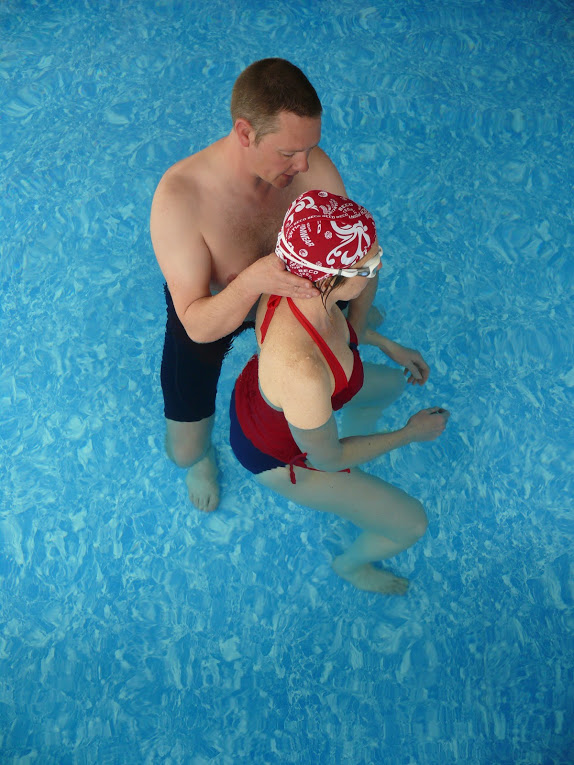Breathing out comfortably into the water is the cornerstone of water confidence. And the key to being able to breathe into the water is relaxing your neck. So the Alexander Technique lends itself very well to learning to swim.
Freeing your neck is the central task in Alexander lessons. But if you’re going to stop tightening your neck in the acts of everyday life, you’ve got to have a really good look at yourself. You have to say NO to your habitual reaction whenever you get the chance. Progress is subtle and can feel slow.
Even when you have a moment of freedom in the hands of a teacher, you might not fully appreciate what’s just happened. The teacher’s hands promote release and it feels like therapy. You walk away from a lesson longer and wider, lighter on your feet, breathing easily. But normal life takes over and, as the feeling wears off, you hope something will stick. Changing your whole pattern of use of yourself might be the most significant thing you can do to improve your life. But can you be bothered?
In some situations though, the ability not to tighten your neck is the definitive difference between success and failure.
The most dramatic application of the Alexander Technique I know, one which makes me glad I did those three years of training, is when someone fearful of putting their face in the water learns to breathe into it. At the critical moment before the mouth enters the water, the neck tightens, the head goes back against the spine and the nervous pupil can’t breathe. Their reaction to the water needs to change…
Trying to put the face in the water and breathe is feeling really difficult. The pupil is red faced, their mouth is dry, they say they feel like a slow learner. They are stressed. This has been going on for ten minutes of their first lesson. They’re not aware that they’re tightening their neck. They only know they can’t bring themselves to let air out into the water. A gentle hand on the back of the neck might feel to the pupil like it’s the last thing they want. It’s another new thing for them to deal with.
But I rest my hand on the back of the neck, relax and breathe out into the water myself. Then suddenly, like magic, it happens, they start to make bubbles. This almost always works within a couple of minutes. The pupil might not realise the hand on the neck has made the difference. But it’s happened enough times for me to know.
The whole can of worms which causes a fearful response to putting the face in the water empties, when the pupil stops tightening their neck. For any Alexander Technique teacher this is obvious. Freeing the neck is the golden key.
Every time I get someone to do it, I’m grateful for my Alexander training, 20 years ago. In this one thing – helping people realise this important skill by getting over this significant hurdle – it does pretty well guarantee success. And unlocks the door to a world of discovery offered by the support of water.


